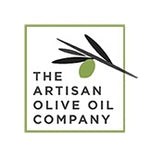Shopping in a supermarket and in a delicatessen store often leads to price comparisons between products with similar names. One of them is balsamic. Between balsamic glazes and aged traditional balsamic vinegar the price gap is enormous but are they the same product?
Looking at the format and list of ingredients can help to understand the difference between balsamic glaze and balsamic vinegar.
Balsamic vinegars are produced through a slow process of acetification of coked grape must. It is essentially a reduction which over time gains in thickness and evolves in taste to reach a balance between sour and sweet notes. The longer the aging process and the higher the density or thickness. Its complex and strong taste is the reason why it used in small quantities to finish a dish, whether a salad or a slice of cheese.
Balsamic glaze, in contrast, is produced with balsamic vinegar but also includes other ingredients thereby allowing to significantly reduce its cost. It has therefore become an affordable daily staple which can be used to decorate many dishes as well as for glazing.

